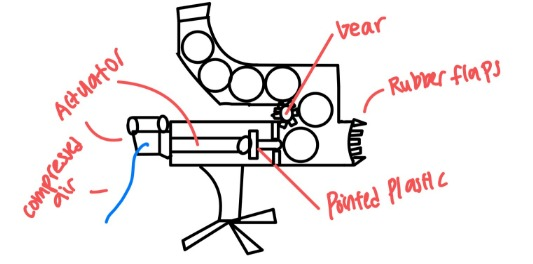Blog 6
Blog 6
-Operating Principles and Mechanism design
-Practical 4
Operating Principles and Mechanism design
In this lesson we learnt about the operating principles behind our chemical products. For our product which is a coffee maker☕, my group agreed that the operating principles behind our product would be
-Leaching (brewing of coffee)
-Heat transfer (heating of water)
-Buoyancy (transport of hot water)
Operating principles
-How things work? 😯
-What are the principles your chemical product is based on?
- E.G Working principle behind distillation= difference in volatiles
Mechanism
-Something that transform forces and movements into a desired set of output forces and movements
-Enables and enhances principles
We also learnt about the 6 types of mechanism that are in functional prototypes
1) Actuators
2) Cams
3) Gears
4) Lever
5) Ratchet
6) Springs
Actuator
- 3 types: Electric, Pneumatic and hydraulic
- Converts stored energy into motion
- Stored energy: compressed air, electrical potential, liquid pressure
Cams
- Converts the rotation of a shaft into simple or complex reciprocating linear motion.
- Can be sliding or rotational pieces in a mechanical linkage.
Gears
- Types: Spurs, Helical, Worm, Planetary and bevel gears
- Transmit torque
- Adjust rotational velocity
Ratchet
- Locks in one direction
- E.G: Cable ties
Lever
- Transmit and amplify force by fixing input and output about a pivot point
Springs
- Stores energy
- Dissipate energy
- Types: Compression, Extension torsion, plate, constant force
Afterwards we had to design a ping pong ball launcher by first determining the mechanisms. Our design for the launcher should consist of:
- Ping pong ball launcher should be able to shoot and reload ping pong balls
-Device should be able to hold at least 5 ping pong balls
-Should propel ball with stored energy
Propulsion Principle
An actuator will pull a pointed plastic backwards, storing energy in the actuator in the form of compressed air. When it moves forward it converts the stored energy into motion, thus propelling the ping pong ball forward. One can fix how far the ball travels by supplying the actuator with different amounts of compressed air. Ball loading Gears can be used for ball loading. A single gear can be attached to the front of the magazine so that it constantly moves the ball forward to be supplied to the ping pong ball launcher. This is to ensure that the balls do not get stuck in the magazine. Practical 4 WARNING⚠: I did not attend practical 4 Requirements: - Marble run machine with cardboard - structure must incorporate one manually operated mechanism - Marble must be in motion for 30 seconds This was our initial plan with our working mechanism at the left side of the picture. We took inspiration from google and some youtube videos. 📹
However on the day of the practical our teammate Tristan brought a spring he made at home. So we decided to scrap our design and go with a pinball machine instead. He also brought the backing of the pinball machine.









Comments
Post a Comment